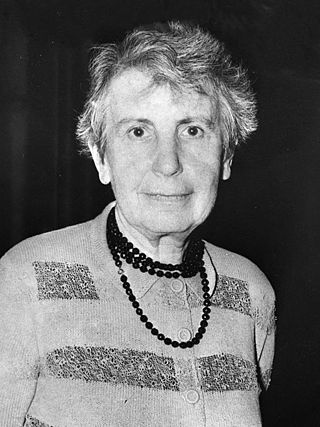Psychoanalysis is a set of theories and therapeutic techniques that deal in part with the unconscious mind, and which together form a method of treatment for mental disorders. The discipline was established in the early 1890s by Sigmund Freud, whose work stemmed partly from the clinical work of Josef Breuer and others. Freud developed and refined the theory and practice of psychoanalysis until his death in 1939. In an encyclopedia article, he identified the cornerstones of psychoanalysis as "the assumption that there are unconscious mental processes, the recognition of the theory of repression and resistance, the appreciation of the importance of sexuality and of the Oedipus complex." Freud's colleagues Alfred Adler and Carl Gustav Jung developed offshoots of psychoanalysis which they called individual psychology (Adler) and analytical psychology (Jung), although Freud himself wrote a number of criticisms of them and emphatically denied that they were forms of psychoanalysis. Psychoanalysis was later developed in different directions by neo-Freudian thinkers, such as Erich Fromm, Karen Horney, and Harry Stack Sullivan.
Psychoanalytic theory is the theory of personality organization and the dynamics of personality development relating to the practice of psychoanalysis, a clinical method for treating psychopathology. First laid out by Sigmund Freud in the late 19th century, psychoanalytic theory has undergone many refinements since his work. The psychoanalytic theory came to full prominence in the last third of the twentieth century as part of the flow of critical discourse regarding psychological treatments after the 1960s, long after Freud's death in 1939. Freud had ceased his analysis of the brain and his physiological studies and shifted his focus to the study of the psyche, and on treatment using free association and the phenomena of transference. His study emphasized the recognition of childhood events that could influence the mental functioning of adults. His examination of the genetic and then the developmental aspects gave the psychoanalytic theory its characteristics. Starting with his publication of The Interpretation of Dreams in 1899, his theories began to gain prominence.

Anna Freud CBE was a British psychoanalyst of Austrian-Jewish descent. She was born in Vienna, the sixth and youngest child of Sigmund Freud and Martha Bernays. She followed the path of her father and contributed to the field of psychoanalysis. Alongside Hermine Hug-Hellmuth and Melanie Klein, she may be considered the founder of psychoanalytic child psychology.
The genital stage in psychoanalysis is the term used by Sigmund Freud to describe the final stage of human psychosexual development. The individual develops a strong sexual interest in people outside of the family.
Object relations theory is a school of thought in psychoanalytic theory and psychoanalysis centered around theories of stages of ego development. Its concerns include the relation of the psyche to others in childhood and the exploration of relationships between external people, as well as internal images and the relations found in them. Thinkers of the school maintain that the infant's relationship with the mother primarily determines the formation of its personality in adult life. Particularly, attachment is the bedrock of the development of the self or the psychic organization that creates the sense of identity.

In Freudian psychoanalysis, the phallic stage is the third stage of psychosexual development, spanning the ages of three to six years, wherein the infant's libido (desire) centers upon their genitalia as the erogenous zone. When children become aware of their bodies, the bodies of other children, and the bodies of their parents, they gratify physical curiosity by undressing and exploring each other and their genitals, the center of the phallic stage, in the course of which they learn the physical differences between the male and female sexes and their associated social roles, experiences which alter the psychologic dynamics of the parent and child relationship. The phallic stage is the third of five Freudian psychosexual development stages: (i) the oral, (ii) the anal, (iii) the phallic, (iv) the latent, and (v) the genital.

Otto Friedmann Kernberg is an Austrian-born American psychoanalyst and professor of psychiatry at Weill Cornell Medicine. He is most widely known for his psychoanalytic theories on borderline personality organization and narcissistic pathology. In addition, his work has been central in integrating postwar ego psychology with Kleinian and other object relations perspectives. His integrative writings were central to the development of modern object relations, a school within modern psychoanalysis.
In Freudian Ego psychology, psychosexual development is a central element of the psychoanalytic sexual drive theory. Freud believed that personality developed through a series of childhood stages in which pleasure seeking energies from the child became focused on certain erogenous areas. An erogenous zone is characterized as an area of the body that is particularly sensitive to stimulation. The five psychosexual stages are the oral, the anal, the phallic, the latent, and the genital. The erogenous zone associated with each stage serves as a source of pleasure. Being unsatisfied at any particular stage can result in fixation. On the other hand, being satisfied can result in a healthy personality. Sigmund Freud proposed that if the child experienced frustration at any of the psychosexual developmental stages, they would experience anxiety that would persist into adulthood as a neurosis, a functional mental disorder.
The anal stage is the second stage in Sigmund Freud's theory of psychosexual development, taking place approximately between the ages 18 months and three years. According to Freud, the anus is the primary erogenous zone and pleasure is derived from controlling bladder and bowel movement. The major conflict issue during this stage is toilet training. A fixation at this stage can result in a personality that is too rigid or one that is too disordered.
Ego psychology is a school of psychoanalysis rooted in Sigmund Freud's structural id-ego-superego model of the mind.

William Ronald Dodds Fairbairn FRSE was a Scottish psychiatrist, psychoanalyst and a central figure in the development of the Object Relations Theory of psychoanalysis. He usually used, and was known as and referred to as, "W. Ronald D. Fairbairn".
Polymorphous perversity is Sigmund Freud's descriptive term for the non-specific nature of childhood sexuality in its primordial form. In psychoanalytic theory, infantile sexual energy (libido) is yet to be definitively channelled into specific aims and objects, and is capable of focusing itself in any direction and on any object. The term points to the amorphous and changeable nature of the libido prior to being shaped in the processes of socialization and psycho-sexual development. Sexual pleasure in this sense is not merely genital, but potentially present in all sensual interactions, including touching, smelling, sucking, viewing, exhibiting, rocking, defecating, urinating, hurting, and being hurt. It is this original non-specificity of the libido in early childhood that makes possible the variations of the sexual drive that later manifest as so-called 'perversions’ in the adult.
Regression, according to psychoanalyst Sigmund Freud, is a defense mechanism leading to the temporary or long-term reversion of the ego to an earlier stage of development rather than handling unacceptable impulses more adaptively. In psychoanalytic theory, regression occurs when an individual's personality reverts to an earlier stage of development, adopting more childish mannerisms.

Feminists have long struggled with Sigmund Freud's classical model of gender and identity development, which centers on the Oedipus complex. Freud's model, which became integral to orthodox psychoanalysis, suggests that because women lack the visible genitals of the male, they feel they are "missing" the most central characteristic necessary for gaining narcissistic value—therefore developing feelings of gender inequality and penis envy. In his late theory on the feminine, Freud recognized the early and long lasting libidinal attachment of the daughter to the mother during the pre-oedipal stages. Feminist psychoanalysts have confronted these ideas and reached different conclusions. Some generally agree with Freud's major outlines, modifying it through observations of the pre-Oedipal phase. Others reformulate Freud's theories more completely.

Edith Jacobson was a German psychoanalyst. Her major contributions to psychoanalytic thinking dealt with the development of the sense of identity and self-esteem and with an understanding of depression and psychosis. She was able to integrate the tripartite structural model of classic psychoanalysis with the theory of object relations into a revised drive theory. Thereby, she increased the treatment possibilities of the more disturbed pre-oedipal patients.
Love and hate as co-existing forces have been thoroughly explored within the literature of psychoanalysis, building on awareness of their co-existence in Western culture reaching back to the “odi et amo” of Catullus, and Plato's Symposium.
The latency stage is the fourth stage of Sigmund Freud's model of a child's psychosexual development. Freud believed that the child discharges their libido through a distinct body area that characterizes each stage.
Psychoanalytic theory posits that an individual unable to integrate difficult feelings mobilizes specific defenses to overcome these feelings, which the individual perceives to be unbearable. The defense that effects this process is called splitting. Splitting is the tendency to view events or people as either all bad or all good. When viewing people as all good, the individual is said to be using the defense mechanism idealization: a mental mechanism in which the person attributes exaggeratedly positive qualities to the self or others. When viewing people as all bad, the individual employs devaluation: attributing exaggeratedly negative qualities to the self or others.

In classical psychoanalytic theory, the term Oedipus complex refers to a son's sexual attitude towards his mother and concomitant hostility toward his father, first formed during the phallic stage of psychosexual development. A daughter's attitude of desire for her father and hostility toward her mother is referred to as the feminine Oedipus complex. The general concept was considered by Sigmund Freud in The Interpretation of Dreams (1899), although the term itself was introduced in his paper A Special Type of Choice of Object made by Men (1910).

Rose Edgcumbe, sometimes known as Rose Edgcumbe Theobald, was a British psychoanalyst, psychologist and child development researcher.







